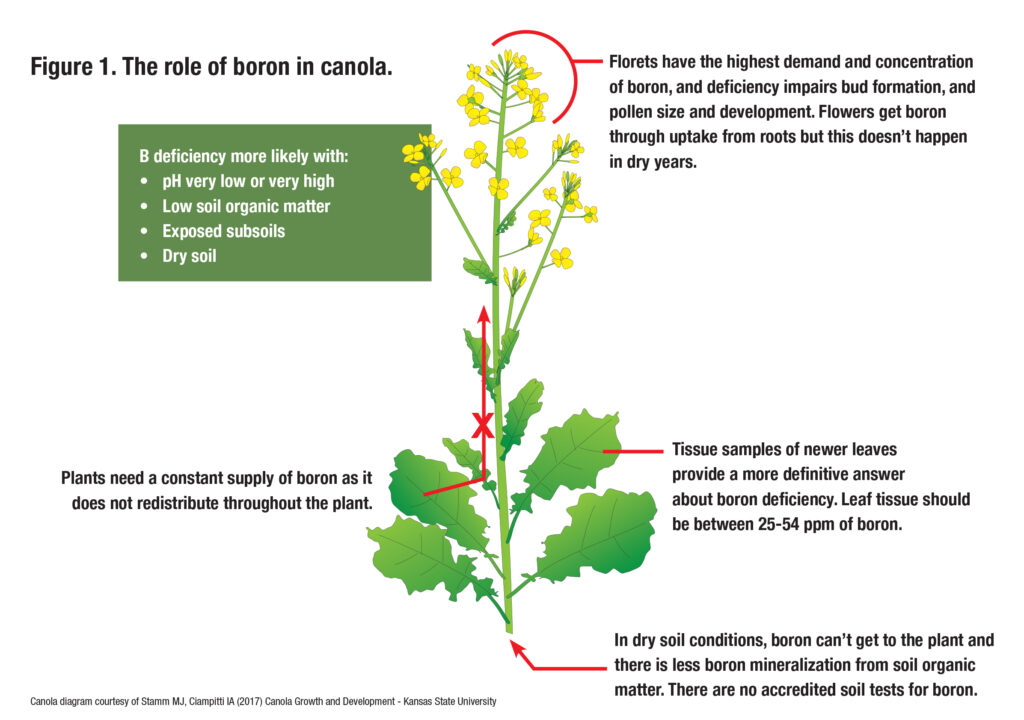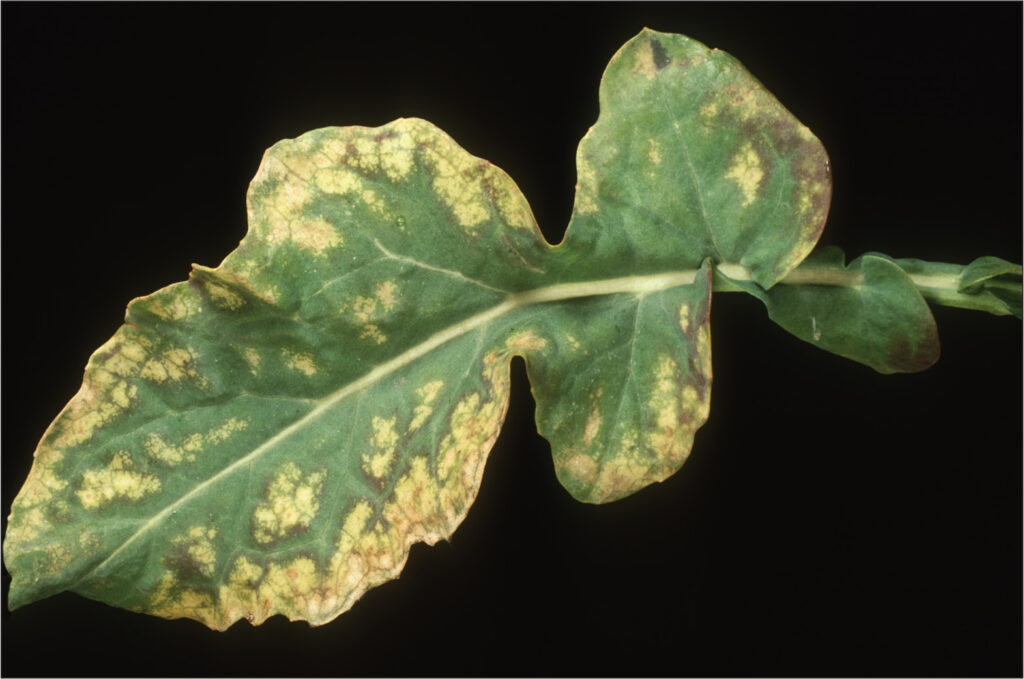Many Ontario canola producers tank mix boron with a preventative white mould fungicide and apply it at 20-50% bloom. We took a closer look at whether foliar boron reduces flower abortion or improves yield.
The simple answer
Published research from across Canada does not show a consistent positive yield response to foliar boron applications, when there is not a boron deficiency. A positive return on investment for foliar boron applications during flowering is most likely if boron supply is limited by dry soil conditions, and the boron is tank mixed with a planned preventative white mould fungicide application.
A little more information
Canola flowers have a higher boron concentration than other plant parts and may be more sensitive to low boron supply. Boron is taken up through mass flow of water from roots through the xylem. Boron cannot be redistributed from foliage to flowers; a continuous supply of boron is required for canola growth. Dry soil conditions reduce mineralization of boron from soil organic matter. Even if boron fertilizer has been soil-applied, dry conditions limit boron uptake and transient boron deficiencies may occur.
Boron deficiency symptoms are rare and generally not a factor in the application of foliar boron in Ontario. Because of the low cost of boron products, the high boron requirement of canola relative to other field crops, and perceived benefits of boron in pollination, most spring canola growers in Ontario tank-mix boron with their preventative white mould fungicide. It is often stated that boron provides protection against flower abortion during hot conditions, but this is not supported in scientific literature, although some data to suggest this was generated in an unpublished trial conducted at University of Guelph. It is more likely that benefits of foliar boron are realized on Ontario farms because of lack of boron uptake by roots during dry conditions at flowering.

Application Rate
Boron (B) should be applied at a rate of 0.3 lb B/ac. Avoid overlaps as foliar boron can be toxic at higher rates. A product containing 134 g B/L contains 0.3 lb B/L and should be applied at a rate of 1 L/ac.
Return on investment
If the cost of the foliar boron product is $6/ac and the price of canola grain is $550/MT ($0.249/lb) a yield increase of 24 lb/ac covers the cost of the boron, where the boron is being tank mixed with a planned fungicide pass. This represents a 1% yield increase where yield is averaging 1 MT/ac (2,204 lb/ac). A yield increase of 75 lb/ac covers the cost of the boron product plus a sprayer application cost of $12/ac.
Boron deficiency
Boron deficiency is not commonly observed in Ontario canola, but if a deficiency is observed, a boron application is recommended. Boron deficiency symptoms include deformed, crinkled and brittle leaves, necrotic patches on leaves or leaf margins, shortened internodes, cracked and hollow stems, and poor seed set. Boron deficiency is difficult to visually identify, so tissue tests are more reliable for diagnosis. Leaf tissue concentrations of boron should be between 25-54 ppm.

The full story
In 2011 and 2012, a trial was conducted at five locations in Ontario, Quebec, Nova Scotia and New Brunswick. When foliar boron was applied at 0.5 kg B/ha (0.44 lb B/ac) from 20-50% bloom, canola yield increased four times out of 10 with ranges from 6.4-13.0%. The researchers conducted further studies at the same sites in 2013 through 2016 and boron did not significantly impact yield (data not published).
In on-farm strip trials conducted at 33 sites in Ontario from 2008 to 2011, 0.3 lb/ac of foliar boron applied at flowering improved yields by 3% on average. Yield increases were observed at 73% of locations, while 27% of locations reported yield reductions. An economic response to foliar boron was observed at 36% of the locations. There were both yield gains and yield losses recorded in the strip trials. The Canola Council of Canada ran on-farm foliar boron strip trials from 2013 to 2015 and found no consistent yield benefit from boron.
